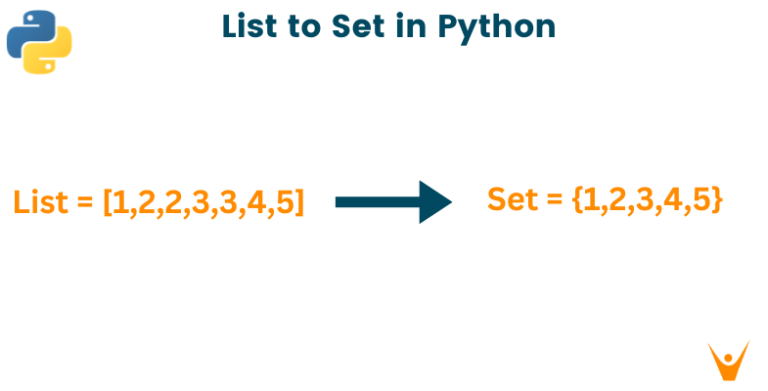Why Application Migration is the Key to Cloud Success
Cloud computing is changing the way businesses run and deliver value to their customers. However, to fully benefit from the cloud, businesses need to migrate their applications from their legacy systems to the cloud. In this article, we will explain what application migration is, why it is important, and how to do it effectively. We will also share some success stories and lessons learned from application migration projects.
What is Application Migration?

The action of moving a software application from one computing environment to another is called application migration. For example, moving an application from an on-premise server to a cloud platform, or from one cloud provider to another. The goal of application migration is to improve the performance, scalability, security, and cost-efficiency of the application, and to enable new features and functionalities.
Why is Application Migration the Key to Cloud Success?
Application migration is the key to cloud success because it allows businesses to leverage the full potential of cloud computing and achieve their goals. Some of the benefits of application migration are:
- Scalability: Cloud platforms can automatically adjust the resources and capacity of the application according to the demand and workload, ensuring optimal performance and availability.
- Performance: Cloud platforms can offer faster and more reliable access to the application, as well as better integration with other cloud services and tools, enhancing the user experience and productivity.
- Security: Cloud platforms can provide advanced security features and protocols, such as encryption, authentication, authorization, and backup, to protect the application and the data from unauthorized access and cyberattacks.
- Cost-efficiency: Cloud platforms can reduce the operational and maintenance costs of the application, as well as the capital expenditure on hardware and software, by charging only for the resources and services used.
How to Migrate Applications to the Cloud?
There are different types of application migrations, depending on the level of change and complexity involved. Some of the common types are:
- Rehosting: This is the simplest and fastest type of migration, where the application is moved to the cloud without any modification or optimization.
- Replatforming: This is a type of migration where the application is moved to the cloud with some minor changes or enhancements, such as changing the operating system, database, or middleware.
- Refactoring: This is a type of migration where the application is moved to the cloud with significant changes or redesigns, such as adopting cloud-native architectures, frameworks, and services.
- Retiring/Replacing: This is a type of migration where the application is discontinued or replaced by a new or existing cloud-based application.
The choice of the best migration type depends on various factors, such as the complexity, dependencies, requirements, and constraints of the application, as well as the business objectives, budget, and timeline of the migration project.
The Challenges of Application Migration?

Application migration is not a simple or straightforward process. It has many challenges and risks, such as:
1. Compatibility:
The application may not work well on the cloud platform. This is because of the differences in hardware, software, or configuration. For example, the application may need a different operating system, database, or middleware on the cloud.
2. Data loss:
The application may lose some or all of its data during the migration. This can happen due to errors, failures, or interruptions. For example, the application may have a corrupted or incomplete data transfer.
3. Downtime:
The application may be unavailable during the migration. This can affect the business operations and customer satisfaction. For example, the application may have a long or unexpected downtime.
4. Security:
The application may face new or increased threats on the cloud platform. This is because of the exposure to the internet, shared resources, or third-party services. For example, the application may have a data breach or a cyberattack.
5. Compliance:
The application may not meet the legal or regulatory standards on the cloud platform. This is because of the differences in data protection, privacy, or governance policies or practices. For example, the application may have a violation or a penalty.
The Solutions of Application Migration?

To overcome these challenges and mitigate these risks, some of the best practices and solutions are:
1. Planning:
Businesses should plan their application migration projects carefully and thoroughly. They should have clear objectives, scope, roles, responsibilities, and milestones. Moreover, they should assess and analyze their application, to identify its characteristics, dependencies, and requirements. They should select and prepare their cloud platform, to ensure its compatibility, suitability, and readiness. They should choose and design their migration strategy and pattern, to ensure its feasibility, efficiency, and effectiveness.
2. Testing:
Businesses should test their application migration projects extensively and iteratively. They should test their application on the cloud platform, to verify its functionality, performance, security, and compliance. Besides, they should test their migration process on a pilot or sandbox environment, to validate its accuracy, reliability, and speed. They should evaluate and review their testing results, to identify and resolve any issues or errors.
3. Monitoring:
Businesses should monitor their application migration projects continuously and proactively. They should monitor their application on the cloud platform, to measure its performance, availability, and security. Furthermore, they should monitor their migration process on the source and destination environments, to track its status, duration, and impact. They should collect and analyze their monitoring data, to detect and prevent any failures or interruptions.
4. Automation:
Businesses should automate their application migration projects as much as possible. They should automate their application on the cloud platform, to enable the self-service, scaling, and integration of the cloud resources and services. Also, they should automate their migration process on the source and destination environments, to streamline the data transfer, configuration, and verification. They should develop and deploy their automation tools and scripts, to simplify and accelerate the migration tasks and steps.
What are the Lessons Learned from Application Migration?
Application migration is not only a technical process, but also a learning process. Businesses can learn from their own experiences, as well as from the experiences of other businesses, to improve their application migration projects and outcomes. Some of the main lessons learned and best practices from application migration are:
1. Align migration with business objectives:
Businesses should align their application migration projects with their business objectives and goals, such as improving customer satisfaction, increasing revenue, or reducing costs. They should also align their application migration projects with their cloud strategy and vision, such as adopting a hybrid, multi, or public cloud model, or becoming a cloud-first or cloud-native organization.
2. Involve stakeholders:
Businesses should involve all the relevant stakeholders in their application migration projects, such as the business owners, users, developers, testers, operators, and managers. They should engage and inform them throughout the migration project, from the planning to the evaluation phase. They should also train and educate them on the cloud platform, to ensure their awareness, readiness, and adoption.
3. Assess applications:
Businesses should assess the applications they want to migrate, to determine their characteristics, dependencies, and requirements. They should categorize and prioritize them, based on their complexity, criticality, and suitability for the cloud. They should also evaluate and compare them, based on their current and expected performance, availability, security, and compliance on the cloud.
4. Choose the right migration strategy and pattern:
Businesses should choose the right migration strategy and pattern for each application, based on the factors such as the complexity, dependencies, requirements, and constraints of the application, as well as the business objectives, budget, and timeline of the migration project. They should design and document their migration strategy and pattern, to ensure its feasibility, efficiency, and effectiveness.
5. Prepare the destination environment:
Businesses should prepare the destination environment for their application, to ensure its compatibility, suitability, and readiness. They should configure and optimize the destination environment, to meet the application’s requirements and expectations. They should also test and verify the destination environment, to ensure its functionality, performance, security, and compliance.
6. Restore and reconfigure the application:
Businesses should restore and reconfigure their application on the destination environment, to ensure its stability, scalability, and usability. They should transfer and install their application, to ensure its accuracy, reliability, and speed. They should also reconfigure and optimize their application, to ensure its integration, alignment, and enhancement with the cloud resources and services.
7. Automate when possible:
Businesses should automate the migration tasks and steps when possible, to reduce the human intervention, error, and effort. They should automate their application on the destination environment, to enable the self-service, scaling, and integration of the cloud resources and services. Additionally, they should automate the migration process on the source and destination environments, to streamline the data transfer, configuration, and verification. They should develop and deploy the automation tools and scripts, to simplify and accelerate the migration tasks and steps.
8. Evaluate the results:
Businesses should evaluate the results of their application migration project, to ensure its success and improvement. They should measure and compare their application, to quantify its performance, availability, security, and compliance on the cloud. In addition, they should review and report their migration project, to assess its objectives, scope, and outcomes. They should use the evaluation results to identify and implement any feedback, changes, or enhancements.
Conclusion




